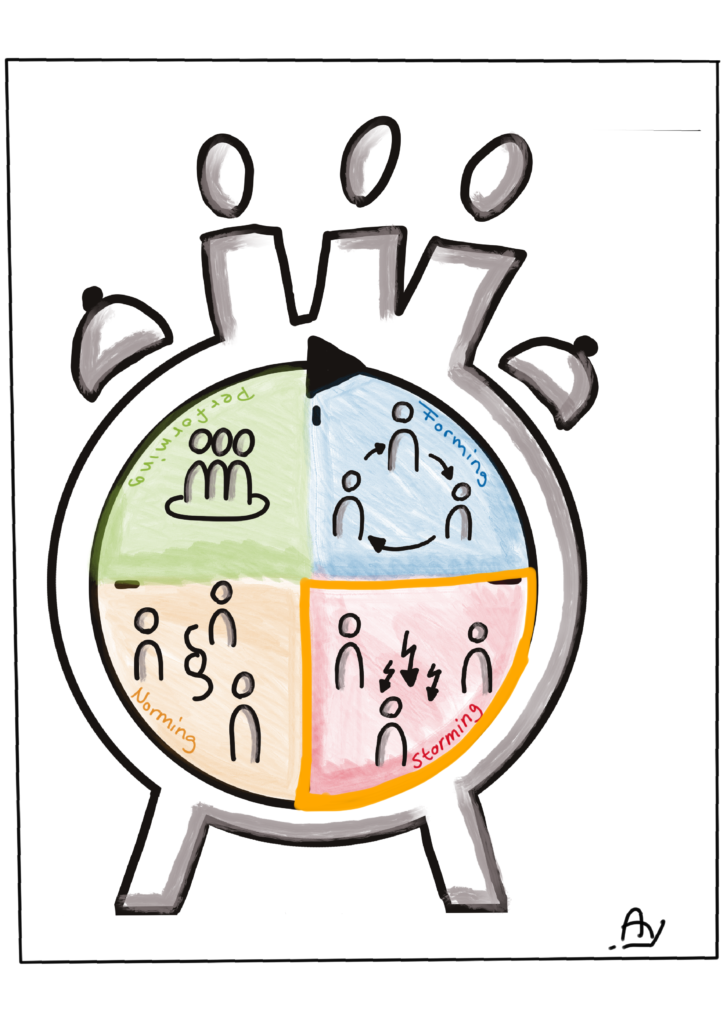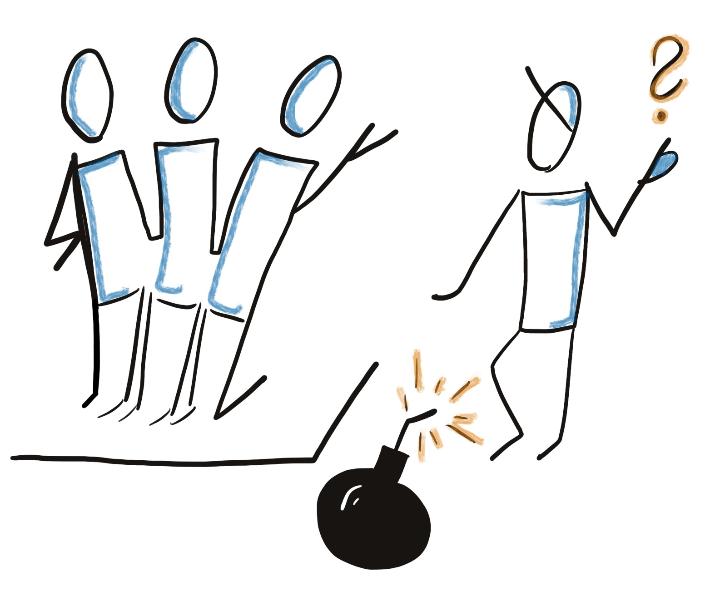In my last article, I described the Forming phase and their significance for you as a Scrum Master. Today we turn our attention to the Storming phase, which is often considered the most turbulent phase of team development. Your understanding and leadership through this phase is crucial to successfully shaping and strengthening teams.

What is the storming phase?
The storming phase is the second of Bruce Tuckman's phases of team development: Forming, Storming, Norming, Performing and Adjourning. In the storming phase, conflicts and differences of opinion come to light while team members clarify their roles and responsibilities. Different working styles and personalities can lead to tensions that challenge the team structure.
Your role as Scrum Master in the storming phase
As a Scrum Master, you play a central role in the storming phase. Your task is to lead the team through this phase and manage conflicts productively.
Here are some practical tips to navigate your team through the storming phase:
1. promote open communication
During the storming phase, it is important to promote open and honest communication. Encourage team members to express their opinions and concerns openly. Use techniques such as the "Fishbowl" discussion or structured feedback rounds to ensure that all voices are heard. A good approach here is also the Agile retrospective.
2. see conflicts as opportunities
Conflicts are unavoidable in the storming phase, but they also offer opportunities for growth and improvement. Support the team in resolving conflicts constructively by focusing on common goals and values, e.g. you can use the opportunity to sharpen your product goal or develop common team values. Moderate conflict discussions and help to find solutions that are acceptable to everyone involved.
3. define clear roles and responsibilities
Misunderstandings about roles and responsibilities are often at the root of conflicts in the storming phase. Work with the team to define clear roles and responsibilities. Use tools such as Team Canvas workshopsto create clarity. You can find out more about clear roles in our Article about Scrum roles read more.
4. develop team norms
Jointly developed team norms can help to manage expectations and control behavior within the team. Hold a meeting in which the team defines norms and rules together. These norms should cover aspects such as communication rules, dealing with conflict and decision-making. Read more about this in our article on Teamwork and standards.
5. promote emotional intelligence
Emotional intelligence is particularly important in the storming phase. As a Scrum Master, you should be a role model for emotional intelligence and help team members to develop their own skills in this area. Carry out exercises to promote empathy and self-reflection and offer coaching if necessary. For more information on emotional intelligence, you can consult the American Psychological Association.
6. use retrospectives effectively
Retrospectives are a valuable tool for managing the storming phase. Use retrospectives to obtain regular feedback and to identify and solve problems in the team. Ask specifically about obstacles and conflicts and work together on improvement measures. Visit our page on Retrospectives, to find out more. Detailed instructions on how to carry out You can find retrospectives on Mountain Goat Software.
7. obtain external support
Sometimes an external perspective can be helpful. Consider bringing in an experienced agile coach or mediator to guide the team through difficult conflicts. An external expert can often offer objective insights and bring new solutions.
Literature tips
- "The Five Dysfunctions of a Team" by Patrick Lencioni: A classic that delves deep into the dynamics of team conflicts and offers practical solutions.
- "Emotional Intelligence 2.0" by Travis Bradberry and Jean Greaves: An excellent book to promote your own emotional intelligence and that of your team.
- "Agile Retrospectives: Making Good Teams Great" by Esther Derby and Diana Larsen: This book offers many practical techniques for effective retrospectives.
- "Crucial Conversations: Tools for Talking When Stakes Are High" by Kerry Patterson et al: A great guide to difficult conversations and conflict management.

Conclusion
The storming phase is a challenging but also a crucial phase of team development. With the right strategies and techniques, you as a Scrum Master can help your team successfully navigate this phase and emerge stronger. Remember that conflict and tension are natural parts of team development and your ability to manage them is critical to the long-term success of the team.
In our next article, we will look at the norming phase and show you how you can support the team in developing stable and productive working patterns. Stay tuned!
For more information and resources on the phases of team development, visit our article on the Importance of the team phases for a Scrum Master.

Write a comment